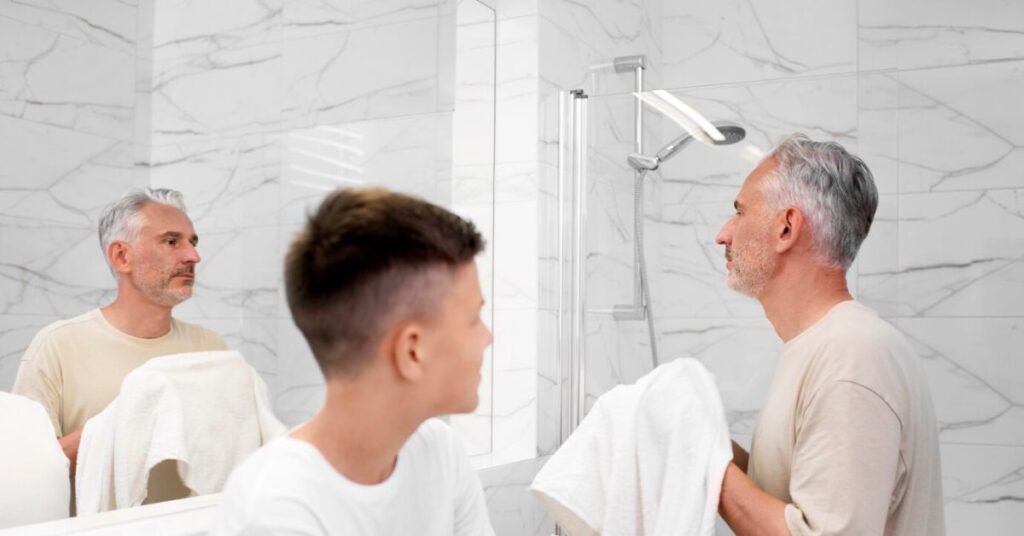Walk-in tubs aren’t just about luxury—they’re about safety, comfort, and accessibility. Many people install them to prevent accidents, especially older adults or anyone with limited mobility. A traditional bathtub can become risky when balance or movement is an issue. A walk-in tub removes those risks and brings peace of mind.
In this article, we’ll walk you through common issues with regular tubs, explain how walk-in tub installation solves those problems, and share tips on choosing the right setup for your space.
Common Problems with Traditional Tubs
High Thresholds Increase Risk of Falls
Regular tubs usually require a high step to get in. For many seniors or those with physical challenges, lifting a leg that high can be tough or even dangerous. Falls in the bathroom are one of the top reasons people end up in the ER.
Slippery Surfaces with No Support
Most traditional tubs don’t have built-in seats, rails, or textured floors. That means you’re standing on a slick surface with nothing to hold onto. This makes it easy to slip and fall, especially when water or soap is involved.
Why More People Are Installing Walk-In Tubs
Built-In Safety Features Prevent Accidents
One of the top benefits of walk-in tubs is their low-entry door. Instead of stepping over a high wall, users can walk right in. These tubs also have grab bars, non-slip flooring, and built-in seats, which lower the chance of injury.
Great for Muscle and Joint Relief
Many walk-in tubs include hydrotherapy or air jets. These features are great for folks with arthritis, fibromyalgia, or back pain. A short soak can ease aches and improve circulation, making daily life more comfortable.
Installation Challenges and How to Handle Them
Fitting the Tub into Small Bathrooms
Walk-in tubs are often bulkier than regular tubs. That can be a problem in tight bathrooms. Before starting, it’s smart to measure your space and think about doorways and plumbing layouts.
Plumbing Adjustments and Code Rules
Some homes need new pipes or valves to handle a walk-in tub. You also may need a permit, depending on where you live. It’s always best to check local building codes before work begins. This keeps you legal and safe.
How to Pick the Right Walk-In Tub
Sizing Options for Different Homes
Walk-in tubs come in many shapes and sizes. Some are deep but narrow. Others are wide for easy turning or even wheelchair use. If you’re tall, wider and deeper tubs might feel better. For smaller bathrooms, compact models save space without giving up comfort.
Key Features to Look For
There are lots of extras to consider. Fast-drain systems help empty the tub quickly. Heated seats add comfort while you wait. Handheld shower heads give you more control. Think about what matters most to your lifestyle and choose based on those needs.
The Long-Term Value of a Walk-In Tub
Easy Maintenance and Upkeep
Most modern walk-in tubs are made from acrylic or fiberglass, which makes cleaning a breeze. Look for tubs with mold-resistant surfaces. Drain the tub completely after use, and wipe it down to keep it fresh.
Repair Costs and Warranty Plans
Some tubs come with lifetime warranties, which can be a huge help down the road. Others offer partial coverage. It’s worth asking about these details upfront. Also, learn what’s covered in repairs, especially for pumps or electric parts.
Budgeting for Walk-In Tub Installation
Knowing the True Cost
The cost of walk-in tub installation can range from a few thousand dollars to over ten thousand, depending on the model and bathroom changes needed. Extra plumbing or electrical work will raise the price. Always get a clear estimate before saying yes.
Can Insurance or Medicare Help?
In most cases, Medicare doesn’t cover walk-in tubs unless it’s part of a broader medical plan. However, some private insurance providers or local assistance programs may offer help. Veterans may also qualify for funding through VA benefits.
Where Walk-In Tubs Make the Biggest Impact
Seniors Who Want to Stay Independent
A walk-in tub makes it easier for older adults to live on their own. It removes the fear of falling and helps them feel more secure. That can delay or even prevent the need for assisted living.
People with Chronic Conditions or Disabilities
For someone with mobility issues, even a simple bath can become stressful. A walk-in tub brings comfort back into daily routines. With a safe seat and warm water jets, it helps reduce strain and increase confidence.
Conclusion: Invest in Comfort, Safety, and Peace of Mind
Walk-in tubs aren’t just a trend—they’re a practical upgrade that adds real value to your home and daily life. Whether you’re caring for a loved one or planning ahead for your own needs, walk-in tub installation can make a huge difference.
From reducing falls to offering soothing relief for aches, these tubs are built to support your health and independence. Think of it not just as a bathroom upgrade—but as a lifestyle upgrade that’s built to last.







